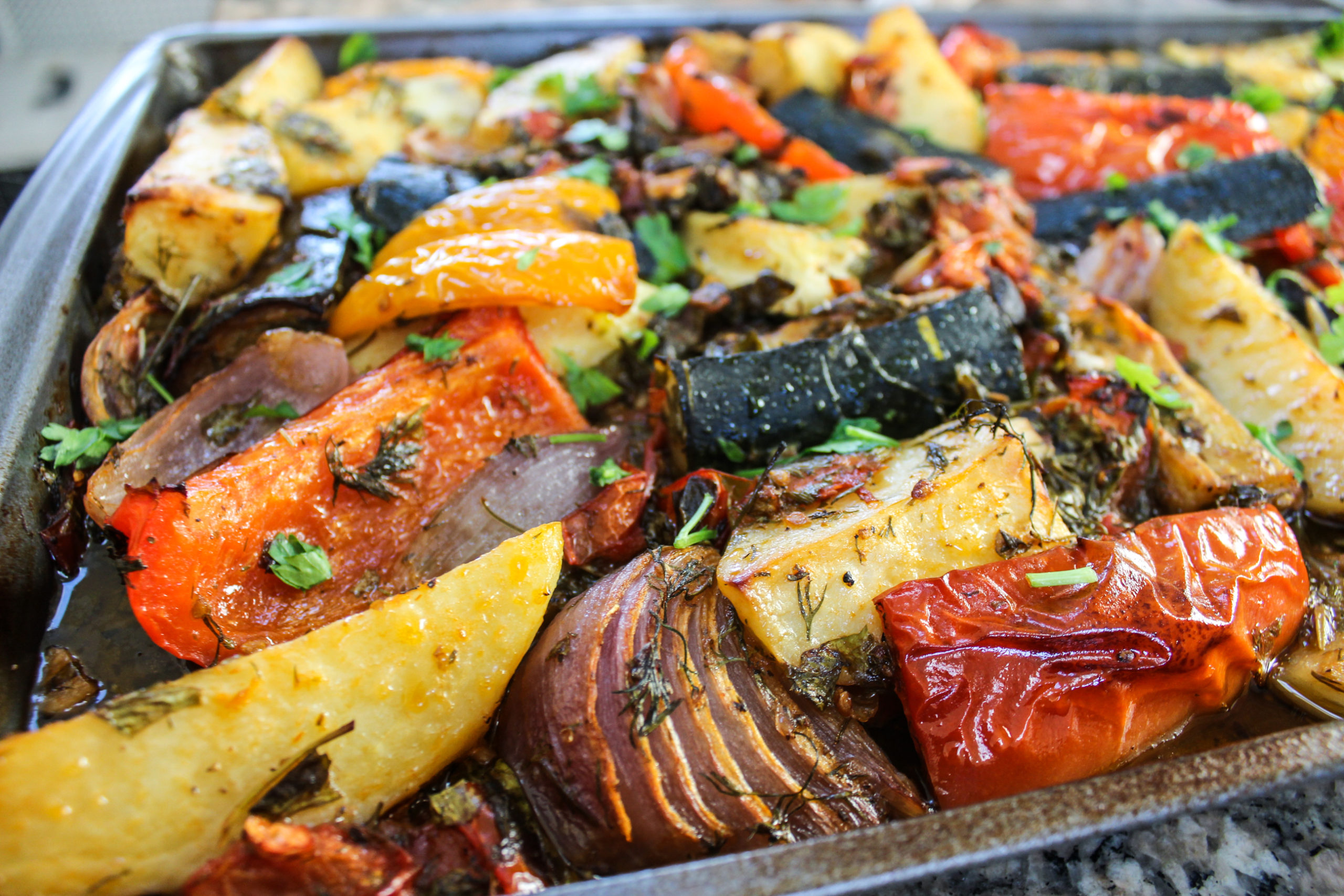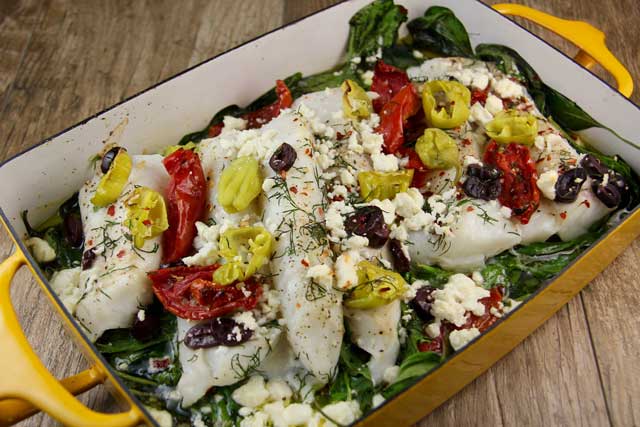Mediterranean Diet Food Pyramid: What it is and How to Follow it
By Bill Bradley, R.D.
Updated November 14, 2024
The Mediterranean diet is an ancient cultural practice of the people bordering the Mediterranean Sea that has captivated scientists, nutritionists, and health enthusiasts. It was defined by Ancel Keys in the 1960s, when it was shown to be more beneficial than existing recommendations by the US Department of Agriculture’s food pyramid (the base of which was white bread).
It has become one of the most researched diets, with almost 10,000 studies in PubMed today.
Over the last 70 years, research has shown that the diet has significant health benefits. In 1993, the Mediterranean diet pyramid was designed to make it easier for people to understand and follow the Mediterranean diet.
What is the Mediterranean diet?
The Mediterranean diet is a set of dietary and lifestyle choices based on the traditions, diet, and culture of people living around the Mediterranean Sea, including Crete, France, Morocco, Cyprus, Croatia, Spain Portugal, Greece, and Italy.
It’s a plant-based diet that embraces exercise and communal eating. You can eat almost anything-but in varying quantities. Fruit, vegetables, legumes, and whole grains are eaten daily, while sweets, red meat, and processed foods are eaten occasionally.
Other variants of the diet have emerged, such as:
- Green Mediterranean diet: this is the Mediterranean diet with large amounts of green tea and duckweed.
- Pesco-Mediterranean diet: This is the Mediterranean diet with more emphasis on fish and seafood as animal protein sources, combined with intermittent fasting. Researchers created this hypothetical diet.
What is the Mediterranean diet pyramid?
The Mediterranean diet pyramid is a graphical representation of the Mediterranean diet designed to improve understanding and increase adherence to this way of eating. It was created in 1993 by Oldways, an American nonprofit, with support from the Harvard School of Public Health and The World Health Organization. The pyramid was designed as a healthier option than the U.S. Department of Agriculture’s original food pyramid, which was popular then.
The pyramid shows the food groups in the Mediterranean diet and their ideal frequency, resting on a base of physical activity and communal meals. Water and red wine are displayed beside the pyramid as healthy drinks.

Courtesy of Oldways.org
Understanding the Mediterranean diet pyramid
The Mediterranean diet pyramid is divided into five parts. Each part plays a role in making healthy food choices. The lower and larger a section is, the more liberally you should consume it.
The base: Make these part of your lifestyle
The Mediterranean diet is a product of a rich cultural heritage that prizes physical activity and community. The base of the pyramid reflects this heritage. Communal eating and physical activity are essential to this diet and the foundation on which other choices rest.
First Tier: Eat these foods daily
The first tier of the pyramid shows the food you should eat daily. We have fruits, vegetables, legumes, whole grains, nuts and seeds, herbs and spices, and olive oil on this tier.
Vegetables: green leafy vegetables, carrots, onions, tomatoes, peppers, eggplants, and many others.
Fruits: oranges, bananas, papaya, apples, pears, peaches, grapes, cantaloupe, dates, figs, apricots, berries, cherries, pomegranates, and many others.
Whole grain: Bulgur, farro, buckwheat, barley, couscous, oats, wheat berries, whole-grain bread, bulgur, quinoa.
Legumes: beans, chickpeas, sesame seeds, peanuts.
Olive oil: Olive oil and other healthy oils like avocado.
Nuts and seeds: Walnuts, almonds, cashew nuts, sunflower seeds, and many others.
Herbs and spices: Ginger, cinnamon, garlic, pepper, rosemary, thyme, mint, sage, parsley, tarragon, oregano, cardamom, basil, and many others.
Check out these 3 Mediterranean recipes that will make you love vegetables.
Second tier: Eat these twice a week
Fish and seafood occupy the second tier of the pyramid. These foods are to be eaten at least twice a week.
Fish
Fish are an essential part of the Mediterranean diet.
Oily fish
Oily Fish are rich in omega-3 fatty acids and helpful for heart health. They are also rich in protein, vitamins, and minerals.
Examples of oily fish include:
Trout
Salmon
Herring
Sardines
Anchovies
Albacore tuna
Lean fish
Lean fish have fewer calories and may be preferred if you dislike fishy smells. Examples are:
Cod
Bass
Tilapia
Halibut
Grouper
Haddock
Fish to avoid
You should avoid fish that are likely to be high in mercury, poisonous, and threatened species.
Fish that may contain mercury: shark, ling, swordfish, and orange roughy.
Poisonous fish: puffer fish, stone fish, tiger fish.
Threatened species: Atlantic halibut, orange roughy, beluga sturgeon, red handfish, Atlantic bluefin tuna, European eel, winter skate.
Seafood
Seafood is a rich source of protein and minerals. They are often low in calories and rich in flavor.
Examples of seafood are:
Shrimp
Lobster
Crab
Mussels
Clams
Periwinkles
Third tier: Eat moderate portions daily to weekly
In the Mediterranean diet pyramid, these foods are to be eaten daily to weekly in moderate portions. They include:
Poultry: Chicken, turkey, duck, and quail.
Eggs: Eggs from chicken, turkey, duck, and quail.
Cheese: Strongly flavored cheese like Parmesan and feta should be preferred over highly processed cheese.
Yogurt: Whole fat Greek yogurt is preferred. Avoid yogurt with plenty of sugar and additives.
Check out these 3 Mediterranean Chicken recipes that you will LOVE.
Top of the pyramid: Eat less often
Foods to be eaten less frequently are at the peak of the pyramid.
These include
Sweets: Candy, ice cream, milk chocolate and other foods high in added sugar.
Red meat: Beef, goat, ram, pork, and other red meat
Saturated fat: Butter, lard, and other saturated fats. Margarine contains trans fat and should never be eaten.
Check out these 3 Mediterranean recipes that have tons of meaty flavor with less meat.
Who should follow the Mediterranean diet?
The Mediterranean diet is an excellent choice for people who want a diet with proven health benefits that allows them to enjoy a wide range of foods.
However, it may not be the best diet for people with some health conditions (who have special diets) or those with allergies to any foods listed.
Other challenges one might face when following a Mediterranean diet include the following:
Possible micronutrient deficiency. With less red meat, dietary iron needs may be hard to meet. Low calcium may also be a concern due to the low dairy although if you are eating cheese and yogurt plus plenty of nuts, beans and dark leafy greens, you should be getting plenty of calcium.
Long preparation times. Because this diet relies on cooking fresh meals, it can be challenging to find the time to prepare meals. You can save time by using Mediterranean recipes that utilize a crockpot, Instant Pot, sheet pan or Dutch oven.
Higher grocery bills. Some people find that the Mediterranean diet increases their grocery bills. The higher cost of food could make the diet out of reach for some folks. There are plenty of ways to save money and still eat the Mediterranean Diet. Check out our Eating the Mediterranean Diet on a Budget Video here.
How can you follow the Mediterranean diet food pyramid?
You can follow the Mediterranean diet pyramid by eating according to its guidelines.
You should consider your current health goals and discuss your diet with a registered dietitian if you have any questions.
Here are some tips to help.
1. Make physical activity part of your lifestyle. Although the pyramid doesn’t provide guidelines on how much exercise you need, it emphasizes an active lifestyle. Research shows that 22 minutes a day, or 150 minutes a week, is adequate.
2. Practice communal eating. If you can, share meal times with your loved ones and make eating a group activity.

If you can’t eat with a group, make meal times a special event. Eat slowly and thoughtfully away from your desk, car, or computer.
3. Choose whole foods. Avoid anything processed or packaged; choose fresh, whole food instead.
4. Make vegetables the main point of your diet. Make vegetables a big part of every meal. While vegetables are rich in nutrients and antioxidants, they are low in calories and harmful compounds. Eat them liberally and daily. Purchase organic vegetables when possible.
5. Minimize saturated fats and sugar. Saturated fats and sugar are high in calories but low in nutrients. Use more olive oil and healthy fats, and eat fruits if you want something sweet. Cakes, cookies, and candies can be enjoyed during special occasions, but they shouldn’t be part of your daily or weekly meals.
6. Use whole grain. In the Mediterranean, there are lots of whole grains eaten. Barley, couscous, millet and quinoa are whole grains that are eaten often. Instead of white wheat and rice, use whole-grained wheat and brown rice.
7. Have fruits for dessert. Fruits are high in fiber, minerals, and vitamins. Enjoy 2-3 servings a day. Fresh fruit should be preferred, but you can also eat dried fruit.
8. Enjoy red wine with meals. If you drink red wine with meals, the recommendation is five ounces daily for women and ten ounces for men. There’s no need to start drinking just for this diet if you abstain.
9. Drink enough water. Water is essential for life and should be your main daily drink. The National Academies of Science, Engineering, and Medicine recommends 125 ounces (3.7 liters) for men and 91 ounces ( 2.7 liters) for women.
10. Cook with olive oil. If you have been cooking with vegetable or palm oil, consider switching to extra virgin olive oil. You can also use olive oil for salad dressing.
11. Stock your pantry with Mediterranean diet essentials. Eating what you have is expected, so buying foods based on the diet you want to follow makes sense.
12. Collect healthy recipes and make a meal plan.
Check out this video of our FREE Mediterranean Diet Weight Loss Meal Plan in action! Download it HERE.
Choosing what to eat each day can be tiring. To make it easier, you can make a meal plan based on the Mediterranean diet. You can use cookbooks and collect recipes online.
13. Don’t worry if you can’t follow every aspect of the diet. Certain aspects of the diet may not suit your lifestyle. It might be hard to practice communal eating if you live alone or drink red wine with meals if you don’t drink alcohol. You can still reap benefits from the diet if you follow the rest of the recommendations.
14. Consider micronutrient supplements. If you want to follow the diet, but are concerned about meeting your daily requirements for calcium and iron, consider taking a supplement or check with a dietitian.
15. Discuss your diet with a registered dietitian if you have any concerns. People with epilepsy, diabetes, and food allergies should pay particular attention to this.
Why you should follow the Mediterranean diet?
The Mediterranean diet helps you find the right balance of nutrients you need along with other beneficial compounds without excess calories.
Some healthy features of the Mediterranean diet are:
1. Antioxidant-rich. Antioxidants are healthful compounds found in most vegetables, linked with lower inflammation and cellular damage.
2. Fiber-rich. Fiber supports good gut bacteria, which is linked to well-being. Also, fiber improves satiety-making you feel full without adding calories.
3. Highly nutritious. The Mediterranean diet contains rich amounts of protein, fats and oil, carbohydrates, vitamins, and minerals. It also contains compounds like omega-3 fatty acids and phytonutrients, which have health benefits.
4. Minimal sugar, saturated fat and red meat. These foods have been linked to increased inflammation and poor health.
5. Whole food focused. It focuses on whole foods, reducing exposure to chemical additives and harmful compounds like trans fat.
6. Healthy fats focused. It encourages eating healthy fats, which is associated with high levels of good cholesterol.
7. Holistic approach. It emphasizes physical activity and community, factors linked with overall well-being.
Ready to Start? We’ve got you covered in this video.
The preventive health benefits of the Mediterranean diet
Research shows the Mediterranean diet has numerous health benefits.
Some of these benefits include:
- Reduces risk of metabolic syndrome and vascular inflammation
- Supports stable blood sugar and reduces the incidence of type 2 diabetes
- Promotes heart and blood vessel health and lowers high blood pressure, stroke, and heart disease risk
- Lowers risk for many cancers, including breast, colorectal, bladder, and gynecologic.
- Lowers obesity risk and helps in maintaining a healthy weight
- Lowers depression risk
- Supports brain health
The Mediterranean diet is one of the best ways to eat, with proven health benefits and benefits for the environment too. Over the years, it has proven to be a trusted, smart approach to eating.
The Mediterranean diet food pyramid is a visual representation of the diet that helps you understand and follow it. You can follow the diet by planning meals according to the pyramid’s recommendations. Doing so increases your chances of good health and longevity.

























Winter LeBlanc says:
Winter LeBlanc says:
Bill Bradley, R.D. says: